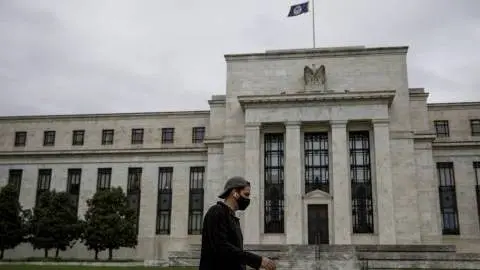ING Monthly: The masks, and gloves, are coming off
Governments and central banks have a new fight on their hands, this time with inflation. As we hopefully see off Covid, the masks are coming off. And so are the gloves
Telling inflation who's the boss
As the world discovers it can largely live with Omicron, it’s not just the masks that are coming off. Central banks are starting to take off the gloves as the ‘grand rotation’ begins and it’s the big ones setting the tone. Remember that just last year, markets were predicting the first US interest rate rise in 2024. Clearly, the Fed’s determination to start normalising monetary policy right now has surprised many. And it’s sending a clear message: The age of cheap money has come to an end. It’s casting off the mantra of ‘lower for longer’ and is determined to bring in a series of rate hikes and shrink its balance sheet. Inflation, not Covid, is the new kid on the block who needs to be shown who’s the boss.
While the Bank of England has followed through with another rate hike, the European Central Bank is still lagging behind when it comes to normalising monetary policy. The ECB, however, is not living on a different planet, it only lives in an economy which is lagging behind the US, explaining the currently still more muted reaction.
While the US economy already reached its pre-crisis level in the second quarter of last year, with a broad inflation spread and labour shortages putting pressure on wages, the eurozone is not there yet. Here, the economy reached its pre-crisis level only at the end of 2021 with differences across countries, inflation still mainly driven by higher energy prices and the labour market has run hot only in a few (core) countries. However, we still think that the ECB and the eurozone will soon be in the same spot as the US, forcing the ECB to speed up tapering and prepare the ground for a first rate hike in early 2023.
Inflation remains the hot topic of the moment. The pass-through from higher energy and commodity prices is not yet over. Companies will continue charging higher prices to consumers and inflation will first spread further into different sectors of the economies before slowing down. And who doesn't expect further price markups in the pandemic-hit sectors such as retail, culture, hospitality and leisure once restrictions are lifted again? At some point, we'll see an almost natural end to this pass-through as neither consumers nor companies can endlessly pay any price charged. This is why we expect inflation rates to eventually come down towards the end of the year.
3D inflation: Decarbonisation, deglobalisation and demographics
The even more interesting question, however, is what will happen to inflation once all pandemic-driven disruption is over. Here, the discussion has only just started. In our view, inflation beyond the pandemic can be labelled as ‘3D inflation’: inflation structurally driven by decarbonization, deglobalization and demographics.
Decarbonisation implies huge investment programmes by governments that need fossil fuels and commodities, but also the price or taxes as a corrective instrument to change human behaviour. Just think of what it needs to build offshore wind parks or railways for high-speed trains. Or how people can be disincentivised to use air traffic or eat too much meat, to mention only a few examples.
Under deglobalisation, China has moved from being a disinflationary force with cheap products and cheap labour to an inflationary driver with high demand for commodities and it's producing higher quality and higher-priced products. The trend for reshoring also opens the door to higher wages. And that's true of demographic changes too, unless all vacancies can be filled by algorithms or robots.
The 'delicate risk' to major central banks
This 3D inflation poses a very delicate risk to major central banks as it is as much globally driven inflation as the disinflation of the last decade was driven by external factors such as globalisation and digitalisation. Most central banks tried fighting deflation with unconventional measures and the jury is still out whether they actually succeeded. It is simply impossible to oppose the ‘counterfactual’ argument that things would have been worse without central bank action.
But what happens if central banks start chasing inflation that, in reality, is as out of reach as the deflation of the last decade? The adverse effects from trying to bring down inflation could be even larger than the adverse effects from fighting deflation. Chasing the current energy and the future 3D inflation could come at the cost of slowing down economies at a time of significant structural change due to the green transition. It could be considered an interesting policy experiment.
Right now, rushing to the exit makes sense and will continue. We will also see governments rushing to roll back Omicron's restrictions, probably sooner in the US and Europe and later in Asia. But, for central banks, rushing to the exit always bears a risk of policy mistakes, be it by stumbling to the exit or by being too fast.
We all know what to do to reach the exit door. We should also start to think about the inflation and central bank reality we'll then find behind it.
Download
Download article
4 February 2022
ING Monthly: The masks, and the gloves, are coming off This bundle contains {bundle_entries}{/bundle_entries} articlesThis publication has been prepared by ING solely for information purposes irrespective of a particular user's means, financial situation or investment objectives. The information does not constitute investment recommendation, and nor is it investment, legal or tax advice or an offer or solicitation to purchase or sell any financial instrument. Read more
